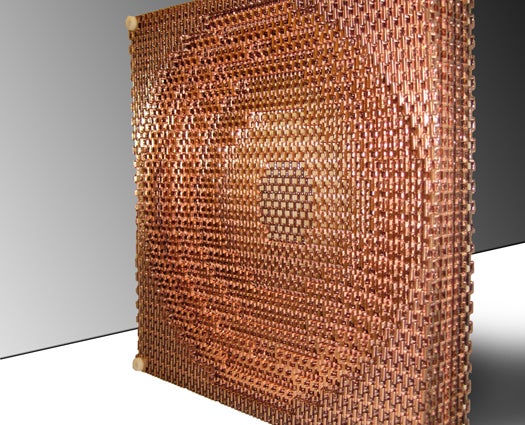MIT-Made Metamaterial Focuses Radio Waves, Could Yield Up-Close Views Of Molecules
The lab-built material focuses radio waves better than anything that occurs in nature.

When nature’s materials can’t do the job scientists want done, it’s time to head into the lab and get creative. That means entering the impressive, strange genre of metamaterials–stuff with a designer molecular structure that gives it unique properties. The latest entry in that field: a metamaterial lens from MIT that can bend and focus radio waves, which could be used to bring us higher-resolution images–of outer space or of molecules on Earth.
The metamaterial is fashioned into a concave lens made with help from 3-D printing. Usually a concave lens works by radiating waves out, like a speaker sending sound out into a room, but with the new material those rays get focused from the ends of the lens into a single point. Researcher Isaac Ehrenberg compares it to the Death Star focusing lasers to take out a planet, which is 1) awesome, 2) accurate, and 3) an excuse to use this clip.

The lens is actually made up of 4,000 “unit cells,” tiny shapes that all bend radio waves slightly. Put enough of those together and you get the focused wave. When the MIT team tested out the process they found that the waves didn’t get slowed down much by the material, either. That focus and efficiency, combined with the lens’s light weight (less than a pound), means it could be ideal for use in imaging processes. The metamaterial might send radio waves to zero in on molecules, or go on top of satellites to guide the waves into the cosmos.